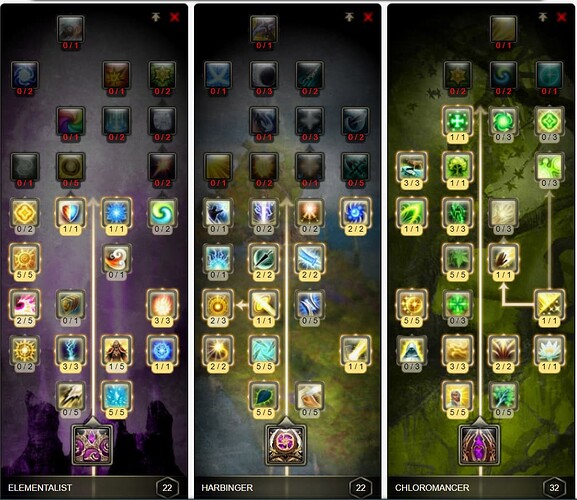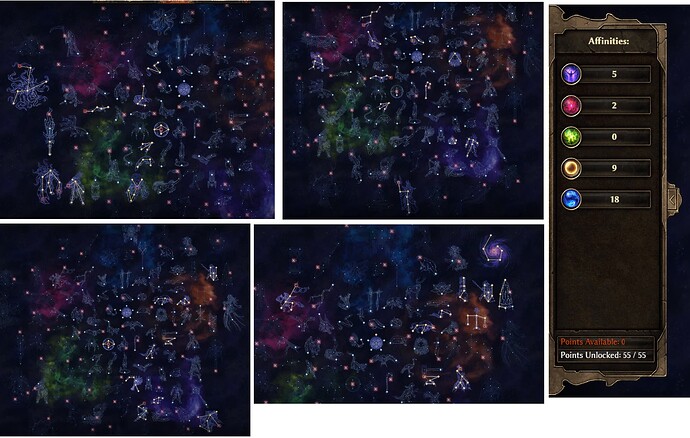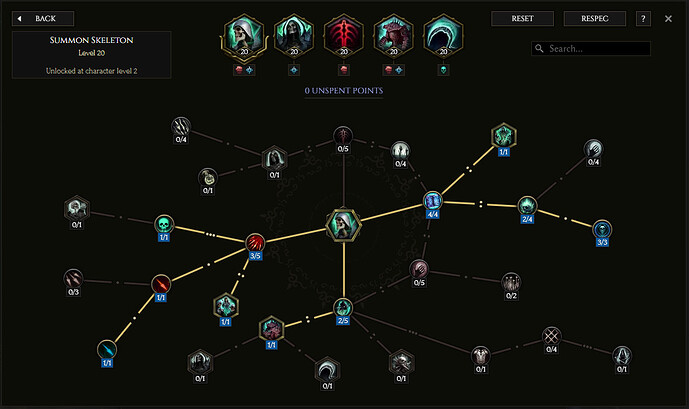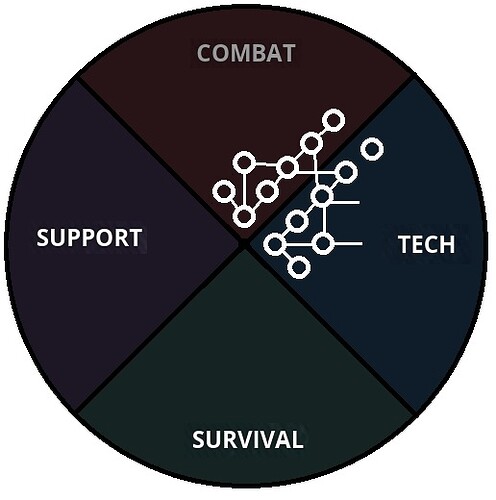The new 2023 Roadmap has come out and there are plans for a new skill revamp.
In this skill forum, I hope to draw inspiration from the games I love to play.
I invite others to share game skill ideas in the comments below. Share what you think was interesting about the skill system and how it was successful.
I DO NOT want to focus on the individual skills and how they can be changed.
I DO want to look at the overall skill system and how skill progression is made.
What I hope to achieve is to inspire the development of a skill system different than what is currently in the game.
GZ Skill Changes
At this point in the game’s development, there is a good chance that the development team has already decided on what they want to change the skills to. Hopefully, they have already drawn great inspiration from existing forums like these:
Current GZ Skill System
As of now, the Generation Zero skill system has skills put in single stacked columns where low-tier skills must be acquired first before reaching high-tier skills (Specializations).
Skill Trees
The act of requiring low-tier skills to be acquired first before gaining access to more powerful high-tier skills is a common practice. I would dare to say it is the bread and butter of all skill trees.
A skill tree will have high-tier skills that each drive a specific type of gameplay and set a focus on a certain type of playstyle in the game. Each high-their skill in a game provides a focus on strengths and advantages for the Player to acquire while exposing or neglecting other areas of weakness.
Enough sets of high-tier skills accompanied by low-tier skills that clearly define distinct gameplay options are required to make a balanced and interesting Skill Tree.
Having a tier skill system is one thing Generation Zero has got right.
Skill Branches
Tier skill systems work in such a way that low-tier skills are generic enough that all skill trees can benefit to some degree from low-tier skills, and not be overly affected by them. Whereas high-tier skills should benefit the most from low-tier skills that are directly correlated with them. The close correlation between a cluster of low-tier skills that give access to high-tier skill(s) is what is called a skill branch.
It is very important for each skill in a skill branch to carry a common theme and support each other’s focus on target gameplay. When a skill that is too high in a skill branch does not support the branch’s focused target gameplay it will become too expensive to acquire for any character build to use.
Having balanced skill branches is an area Generation Zero struggles in.
Skill Coupling and Synergization
There is a common request among players to have more skill points added to the game. I would have to disagree with this request. My reasoning is that this would dilute the skill system.
If players were allowed to acquire every skill in the skill tree then this would leave no room for character-building and growing a character to explore unique playstyles. The game will essentially become boring as the character gets closer to the skill cap.
A Skill Tree should consider following these guidelines:
- You only want enough skill points to specialize in 2 or 3 skill branches but never enough to acquire more than 1/3 of the total number of available skills.
- You also should have at least 5, and preferably more available skill branches to specialize in.
- You shouldn’t have to require a Player to invest in every skill in the branch to specialize in a branch.
- Every branch should have the same number of skill tiers and an equal number of skills.
- Each branch should contribute value to the Player and give enough of an edge in the game to be considered useful over other skill branches and game features that exist outside of the skill tree.
The key to skill tree synergy is that a Player should be able to pick any combination of 2 or 3 branches to come up with different combinations of character builds by synergizing playstyles between the branches.
Skill Growth
I believe having a Character Level that Caps at 10,000 leaves a lot of room for Skill growth.
I don’t believe Generation Zero plans to add 10,000 skills to its Skill Tree, but I do believe that skills can grow in strength as the Player character grows in level.
Generation Zero should know the average max character level among the player base and the average velocity of character level growth. This should allow Generation Zero to gauge the range in which they can scale the power of given skills based on the level of a character.
Old School Multi-Tier Skill Tree
The simplest Skill Tree Generation Zero can create is a Multi-Tier Skill Tree where each tier level consists of a group of skills to choose from and the player has to choose a number of skills in each tier or lower tiers in order to advance to the next tier above it.
This game allows you to choose 3 branches among a possible give or take 10 branches. Yet for a game like Generation Zero, all branches can be available to the Player like we currently have in the game.
Constellation Skill Tree
This Skill Tree was based on a system of Constellations where the player starts in the center and will complete star constellations. For each completed Constellation a group of Affinities is rewarded which opens up other star constellations with higher-tier values. Each star in a constellation grants a passive buff or stat to the Player’s character.
I know this is a very different approach to skill progression than what Generation Zero has but it is a good example of a different approach to the skill tree system.
I like this game’s use of this Constellation skill tree because instead of giving skill points to the Player every time they level up their character, they hide beacons through the game’s map and set up a mini-fight at each beacon location. After taking out a beacon a point for the constellation was rewarded. (Hint, Hint ![]() )
)

Skill Mutation
This game is built as a system based on mutating a set of base skills so that the player can bend the skills they acquire to fit the theme of the character build they wish to play. Notice there are multiple paths to end nodes and a fixed number of node-level requirements to advance from one node to the next.






